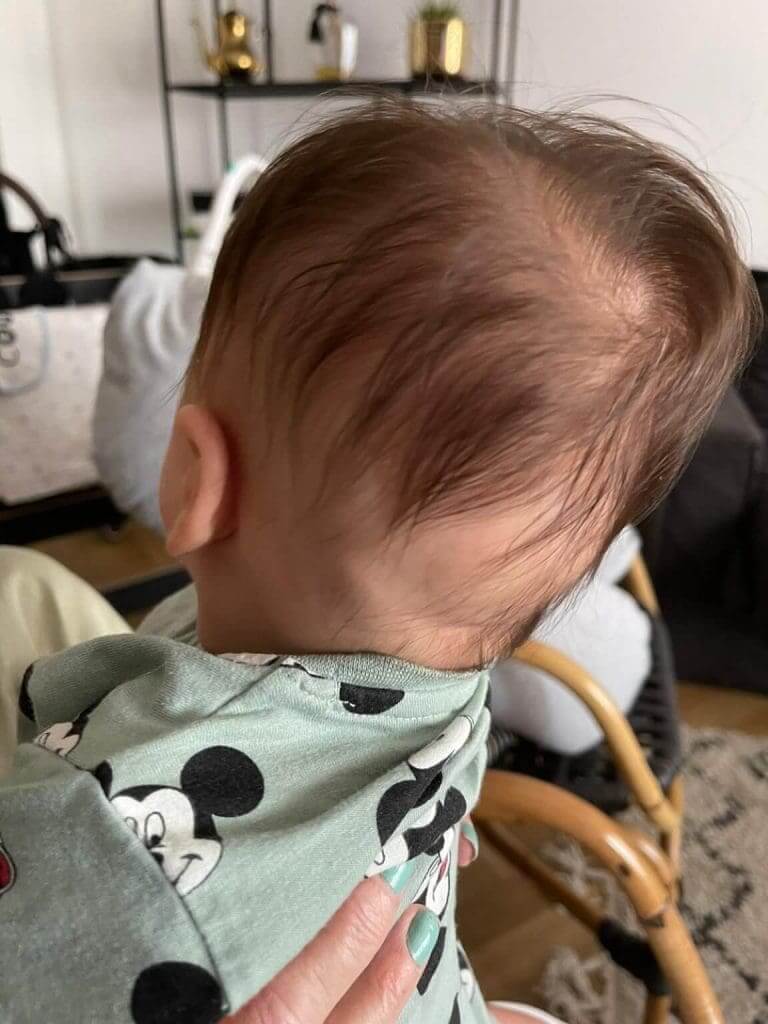
Plagiocephaly (flat head syndrome) in infants
Flat Head Syndrome is common in infants and is usually a result of increased pressure on a specific area of the head that causes a change in the shape of the skull.
The prevalence of plagiocephaly has increased ever since the discovery that placing a baby on his or her back reduces the risk of Sudden Infant Death Syndrome (SIDS). On the other hand, ever since, the prevalence of SIDS has greatly decreased (read more about this here).
What is the prevalence of plagiocephaly in infants?
The medical literature claims that plagiocephaly can be found in almost 50 percent of all infants and that the average age of presentation is between 2 and 3 months of age. The average age of presentation is young because of the fact that it is more difficult for an infant to lift or move his head up until the age of 4 months, especially given the constant increase in head circumference (2cm per month in the first 3 months of life!).
There are also cases of congenital plagiocephaly that are caused by abnormal fetal position in the uterus.
Other risk factors for flat head syndrome include congenital torticollis (read more here) or simply a child’s acquired preference to lay on one side of his head over the other. The books also mention being male, firstborn, premature, bottle-fed only, having siblings with plagiocephaly, having little tummy-time or suffering from developmental delay etc., as risk factors for development of plagiocephaly.
Nonetheless, in most of the cases we come across in pediatrics, the cause is secondary to position (especially sleep) and the phenomena does not indicate any illness or developmental delay.
How is plagiocephaly identified and what are the signs one should be aware of?
It is easy to identify plagiocephaly – you can easily see the flattening of a specific area of the skull. The pediatrician is to inquire the parents of the infant regarding the shape of his/her head after birth and the position at which the child’s head is at during sleep and wakefulness. He is then to carry out a physical examination that includes the palpation of the entire skull in order to determine whether this is a case of plagiocephaly. Often, a bold patch maybe be seen on the flat area.
Craniosynostosis is a diagnosis that should not be missed. This is a condition where the bones of a baby’s skull join together too early and it can also lead to the development of flat head syndrome. However, a physician can rule this diagnosis out with the help of good history taking and a thorough physical examination.
Of course, when there is doubt, the child should be referred to a specialist in the field (a neurosurgeon), for a consult.
What can we do to treat flat head syndrome?
Here are some practices that may be helpful:
• Changing the sleeping/lying position when possible, so that there is less pressure applied to the flat area of the head. Sometimes it is possible to place the child’s bed in a way that allows the “interesting stuff” in the room to be on the side opposite of the flat area of the head. A physiotherapist may help suggest an alternative position for the head.
• “Tummy time” – this is the time at which the baby lays on his stomach when he is awake. The minimal daily “tummy time” recommended is 3 sessions, each lasting 10-15 minutes. This position, when practiced during the day while the baby is awake, has lots of advantages, including the strengthening of the baby’s shoulder muscles.
• Helmets – this is an excellent option for severe cases. The helmet prevents the application of pressure on the flat area of the head and allows the skull to grow into the space provided by the helmet.
Remember that the first two management options are worth trying regardless of the severity and cause (and can be even used as tips for prevention of development of flat head). Obviously, the earlier these are practiced (preferably before 4 months), the greater the chances of seeing improvement. Although the use of helmets is quite trendy these days, this management option should be limited to the more severe cases and should only be practiced following a neurosurgical consult.
What about long-term management?
In the majority of cases, especially the simple ones, the asymmetry resolves with age. Any remaining asymmetry will usually be minor and insignificant.
As for developmental and cognitive issues – most kids with flat head syndrome will not develop any problems. There may be exceptions to this in severe cases that aren’t treated in time.
So, what have we learned here?
This is a common condition that can be treated as well as prevented and is usually not concerning. Nonetheless, the diagnosis should be made by your pediatrician and a joint decision, together with you, the parents, should be made regarding the management plan.
For comments and questions, please register
